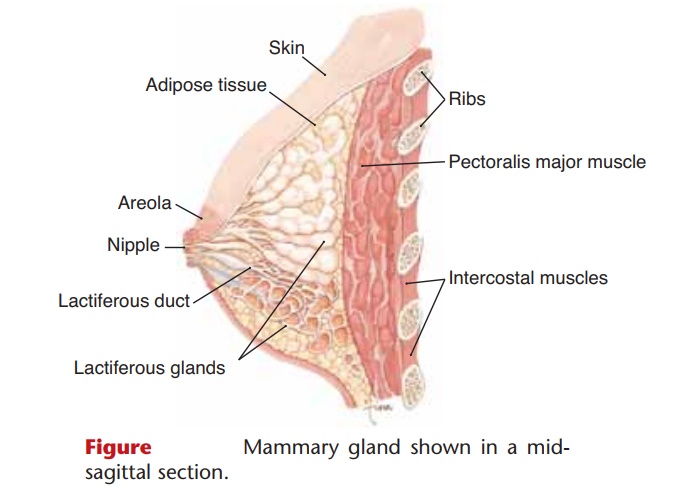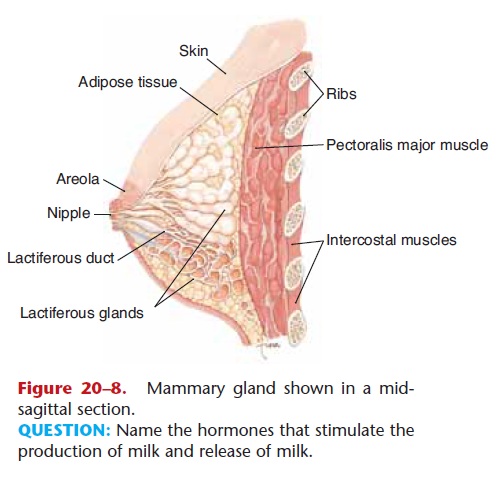Chapter: Essentials of Anatomy and Physiology: The Reproductive Systems
Mammary Glands - Anatomy and Physiology

MAMMARY GLANDS
The mammary glands are structurally related to the skin but functionally related to the reproductive system because they produce milk for the nourishment of offspring. Enclosed within the breasts, the mammary glands are anterior to the pectoralis major muscles; their structure is shown in Fig. 20–8.

The glandular tissue is surrounded by adipose tis-sue. The alveolar glands produce milk after preg-nancy; the milk enters lactiferous ducts that converge at the nipple. The skin around the nipple is a pig-mented area called the areola.
The formation of milk is under hormonal control. During pregnancy, high levels of estrogen and proges-terone prepare the glands for milk production. Prolactin from the anterior pituitary gland causes the actual synthesis of milk after pregnancy. The sucking of the infant on the nipple stimulates the hypothala-mus to send nerve impulses to the posterior pituitary gland, which secretes oxytocin to cause the release of milk. The effects of these hormones on the mammary glands are summarized in Table 20–2.

Related Topics